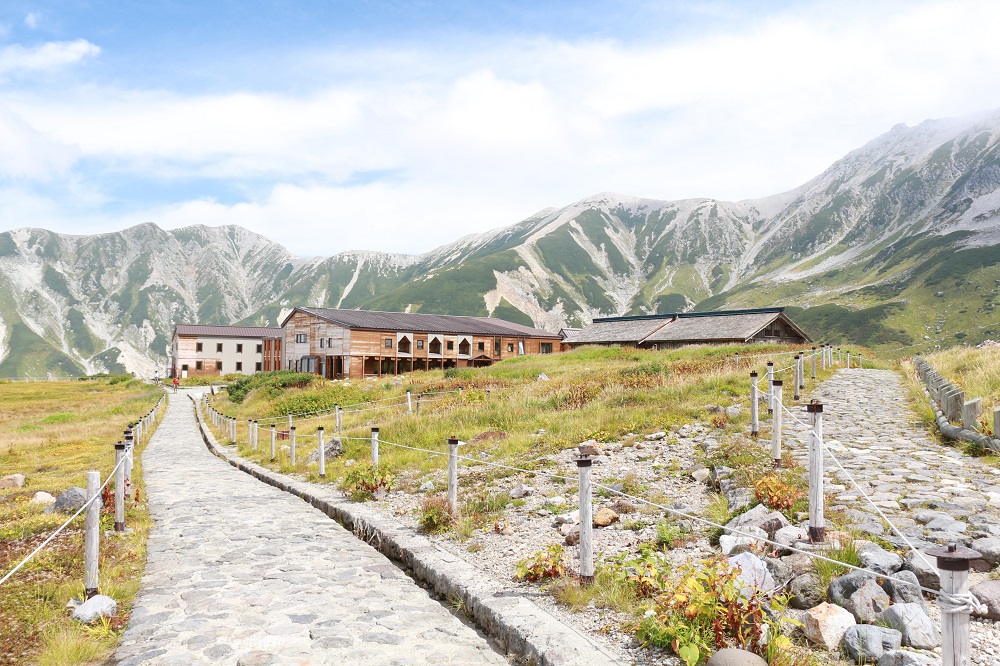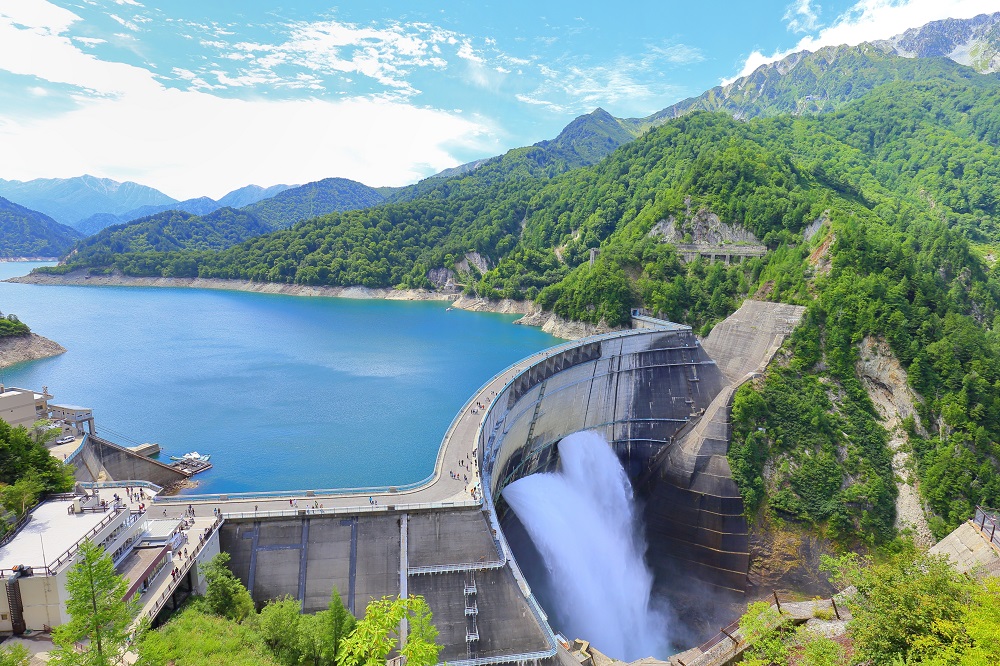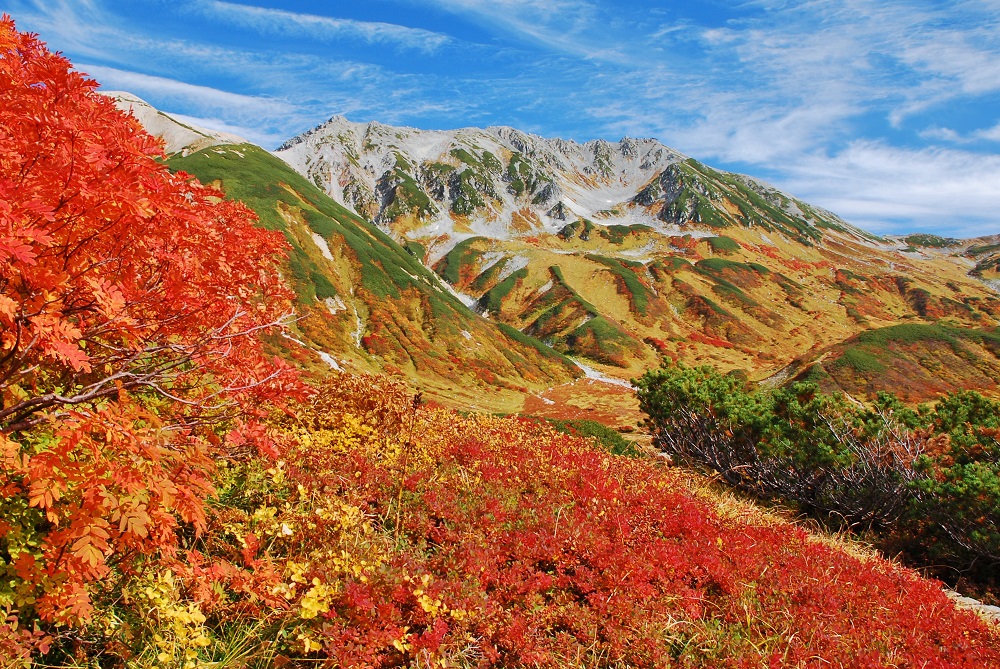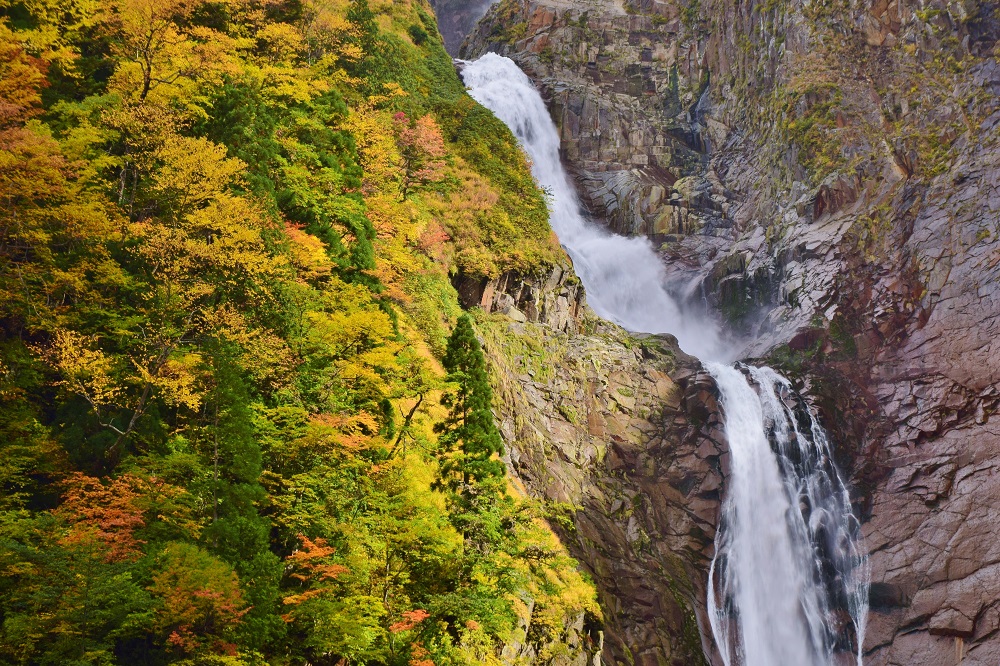The Tateyama Kurobe Alpine Route/立山黒部アルペンルート(Toyama)
About The Tateyama Kurobe Alpine Route
The Tateyama Kurobe Alpine Route is one of the world's most famous mountain tourism roads, stretching 37.2 km through the 3,000-meter-high peaks of the Northern Alps and connecting Toyama and Nagano prefectures. Visitors can enjoy the natural splendor of the Northern Alps in a variety of ways, such as cable cars, buses, and ropeways. There are several “Top in Japan” spots on the Alpine Route, including the tallest dam, the oldest mountain lodge, and the highest station in Japan.

There are two ways to traverse the Tateyama Kurobe Alpine Route: one starts from Tateyama Station in Toyama Prefecture and heads for Ogisawa Station in Nagano Prefecture, and the opposite path begins in Ogisawa Station and heads for Toyama Station. If you want to easily reach Murodo, the highest point on the Alpine Route, we recommend starting from Tateyama Station. From Ogisawa Station, you need to take an electric bus, cable car, ropeway, or trolley bus, but from Tateyama Station, you can reach Murodo simply by taking a cable car and bus. Murodo has many attractions, including Japan's oldest mountain lodge, Tateyama Murodo Sanso, a designated National Important Cultural Property, and Mikuriga-ike, the most beautiful crater lake in the Northern Alps, as well as a variety of restaurants and other facilities.

From April to June each year, a huge 20-meter-high wall of snow, "Yuki no Otani," can be seen near Murodo. The Snow Corridor Walk, where visitors can stroll through the 500-meter-long Yuki-no-Otani, is a rare experience only available here. The spectacular view of the Snow Corridor, which can only be seen during spring, attracts people from all over the world, and every year many tourists from Japan and abroad visit the Tateyama Kurobe Alpine Route. When the weather is fine, the juxtaposition of the white snow against the blue sky is a breathtaking sight, making it a perfect spot for taking pictures.

In addition to Murodo, the Tateyama Kurobe Alpine Route has many other magnificent views.
Shomyo Falls, the highest waterfall in Japan, offers the spectacular sight of water cascading down a 350-meter drop. In the fall, the surrounding trees change color, and visitors can enjoy a stunning view of the waterfall framed by the autumn leaves. In addition, alpine plants bloom beautifully in Midagahara, an Internationally Valuable Wetland registered under the Ramsar Convention. The collection of some 3,000 small ponds and pools scattered throughout the area, known as "Gaki- no-Tambo" (rice fields of the brats), is an intriguing environment. Furthermore, Kurobe Dam, famous for being the highest dam in Japan, abounds in attractive spots where visitors can view the explosive flow of water during the summer season.
Getting there and around
For Tateyama Station
Train
Take the Hokuriku Shinkansen from JR Tokyo Station to Toyama Station (approximately 2 hours 10 minutes). From JR Toyama Station it is 10 minutes on foot to Tetsudo Toyama Station. From there, take the Toyama Chiho Tetsudo Railway to Tateyama Station (about 35 minutes).
From JR Nagoya Station, take the limited express Shirasagi-go to Kanazawa Station (approximately 3 hours), transfer to the Hokuriku Shinkansen to Toyama Station (about 25 minutes), and take a 10-minute walk from JR Toyama Station to Tetsudo Toyama Station to take the Toyama Chiho Tetsudo Railway to Tateyama Station (35 minutes).
From JR Osaka Station, take the JR Thunderbird limited express train to Kanazawa Station (approximately 2 hours 40 minutes), transfer to the Hokuriku Shinkansen to Toyama Station (about 25 minutes), and then take a 10-minute walk from JR Toyama Station to Tetsudo Toyama Station to take the Toyama Chiho Tetsudo Railway to Tateyama Station (35 minutes).
For Ogisawa Station
Train
From JR Shinjuku Station, take the Azusa-go Limited Express to Matsumoto Station (approximately 2 hours and 40 minutes), transfer to the Oito Line at Matsumoto Station for Shinano Omachi Station (about 55 minutes).
From JR Shin-Osaka Station, take the Tokaido Shinkansen to Nagoya Station (approximately 50 minutes), transfer to the limited express train Shinano-go to Matsumoto Station (about 2 hours 5 minutes), transfer to the Oito Line at Matsumoto Station bound for Shinano-Omachi Station (approximately 55 minutes).
Bus
From Shinano-Omachi Station, take a local bus to Ogisawa Station (about 40 minutes).
Top Tip
Kurobe Dam/黒部ダム
At a height of 186 m, the 492-meter-long Kurobe Dam is the tallest dam in Japan. Its creation, worked on by some 10 million people over seven years, is known as the "Great Project of the Century" because of its large scale and the difficulty of construction. The facilities around the dam have exhibits showing the timeline of the construction and the hardships faced in those days. Every year, from late June to mid-October, a powerful water discharge event is held. If you are lucky, you can even see a rainbow over the water.

Autumn Leaves Appreciation
The Tateyama Kurobe Alpine Route incorporates a height difference of 1,975 meters between the highest and lowest points along the route, so visitors can enjoy the autumn leaves for a long period from mid-September to early November. Around Murodo, the highest point on the route, the trees begin to change color around mid-September, however, surrounding Tateyama Station, the lowest point on the route, the leaves begin to change color in late October. Tourists can enjoy viewing the autumn leaves at different times of the year at various locations.

Shomyo Falls/称名滝
Shomyo Falls, one of the "100 Best Waterfalls in Japan" and designated as a National Scenic Beauty and Natural Monument, offers an arresting sight. During the snowmelt season or after heavy rain, a waterfall called "Hannoki Falls" (hannoki means alder, a type of birch) can emerge next to Shomyo Falls, and a third waterfall called "Somen Falls" (somen being thin, white noodles) appear when conditions are right. How lucky you would be to view both the “Hannoki Falls” and the “Somen Falls.”

Bijodaira/美女平
Bijo Daira is located at an elevation of 977 meters and is surrounded by rich virgin forest, where you can see a primeval 200-year-old beech and giant Tateyama cedars over 1,000 years old. It is a treasure trove of birdlife, with more than 60 species of birds making it a famous bird-watching spot. Soak up the healing negative ions in the great outdoors and be soothed by the chirping of birds.

Travel Advice and Tips
The Tateyama Kurobe Alpine Route awarded three stars in the Michelin Green Guide, and the Snow Corridor from April to June offer visitors the experience of walking between walls of snow. The autumn leaves seen from the longest ropeway in Japan are also spectacular. The Shomyo Falls can be seen from the windows of the Tateyama Kogen Bus, and the driver will stop at the observation point. The Alpine Route passage has luggage transportation (for a fee), so you don't have to worry if you have large bags.
